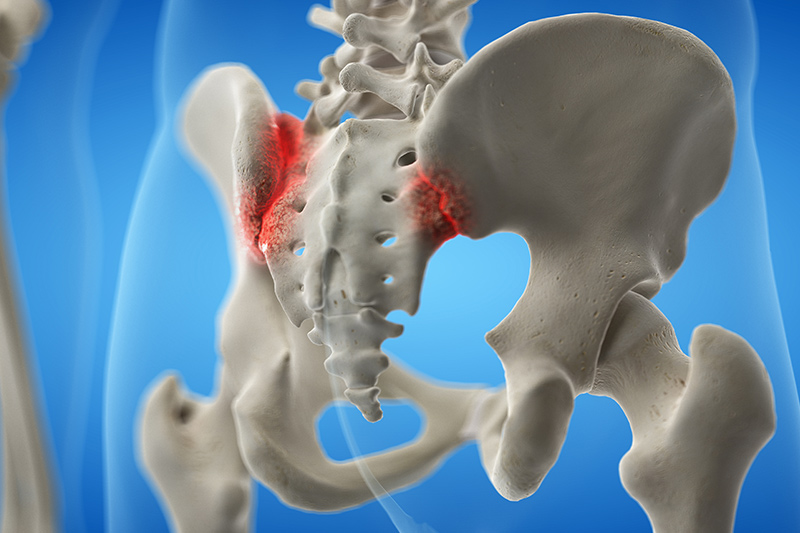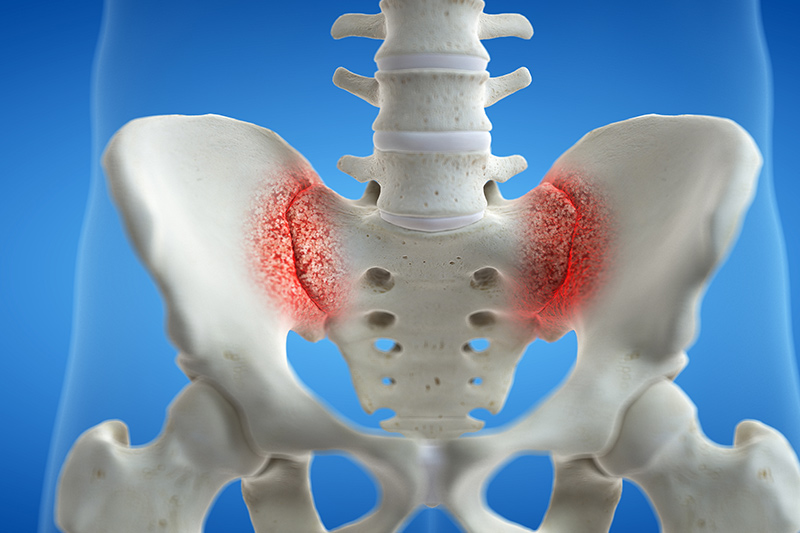Sacroilliac (SI) Joint Pain in Beverly Hills

Sacroiliac (SI) joint pain and dysfunction is primarily caused by trauma or degeneration. Like other joints in the body, the SI joint can suffer wear and tear or get injured when there is trauma to the joint or the ligament that supports it. This may cause pain in the lower spine or back, buttocks, pelvis, and legs.
The sacroiliac joint is the part of the low back just below the waist and the top region of the buttocks. It is where the sacrum (bottom of the spine) connects to the iliac bones (pelvic bones). The left and right SI joints have a few degrees of movement when walking and bending. Some common triggers of SI joint pain are accidents or falls. People that suffer from SI joint pain often report that their pain is worse when sitting for prolonged periods of time.
Symptoms of SI Joint Dysfunction

- Pain in the sacroiliac area of the lower back
- Pain after prolonged sitting
- Difficulty bending or twisting the lower back
- Stiffness in the lower back, hip, or leg
- Feeling of being “out of alignment” in the lower back or buttocks
Causes of Sacroiliac (SI) Joint Dysfunction and Pain
There are various traumatic events that can cause SI joint pain, including:
- Auto accident
- Pregnancy
- Natural childbirth
- Lifting, bending, and/or twisting
- Fall or direct blow to the area
- Sports injury
- Autoimmune diseases (Ankylosing Spondylitis, Rheumatoid Arthritis, Enteropathic Arthritis)
- Stress to the SI joint caused by joint replacement, leg length variation, or scoliosis
- Previous lumbar spine surgery (especially with fusions)
- Inflammatory conditions (Osteoarthritis, Reactive Arthritis, Gout)
Diagnosis of SI Joint Pain
The doctor will evaluate your health history and physically examine your pelvis, hips, back, and legs through provocative joint testing, palpation, and observing the range of motion. You may also require an X-ray, CT scan, or MRI to visualize the joint pathology and/or to rule out other possible causes of pain.
Treatment of SI Joint Pain

Initial treatment options for sacroiliac (SI) joint pain may include:
- Anti-inflammatory medications
- Spine-specialized physical therapy such as manual massage, joint mobilization, and dry needling to help relax tight muscles and mobilize the soft tissues
- Steroid injections for targeted therapy to reduce inflammation and optimize physical therapy
- Regenerative Medicine which utilizes the body’s natural healing process to repair damaged tissue and provide pain relief.
- Radiofrequency Ablation of the SI joint which is used when diagnostic/steroid injections provide effective but short-term pain relief
At Orthopedic Pain Institute, we will develop a highly specialized plan to treat your individualized needs. Schedule your consultation to learn more about SI joint pain treatments and how we can help you.


